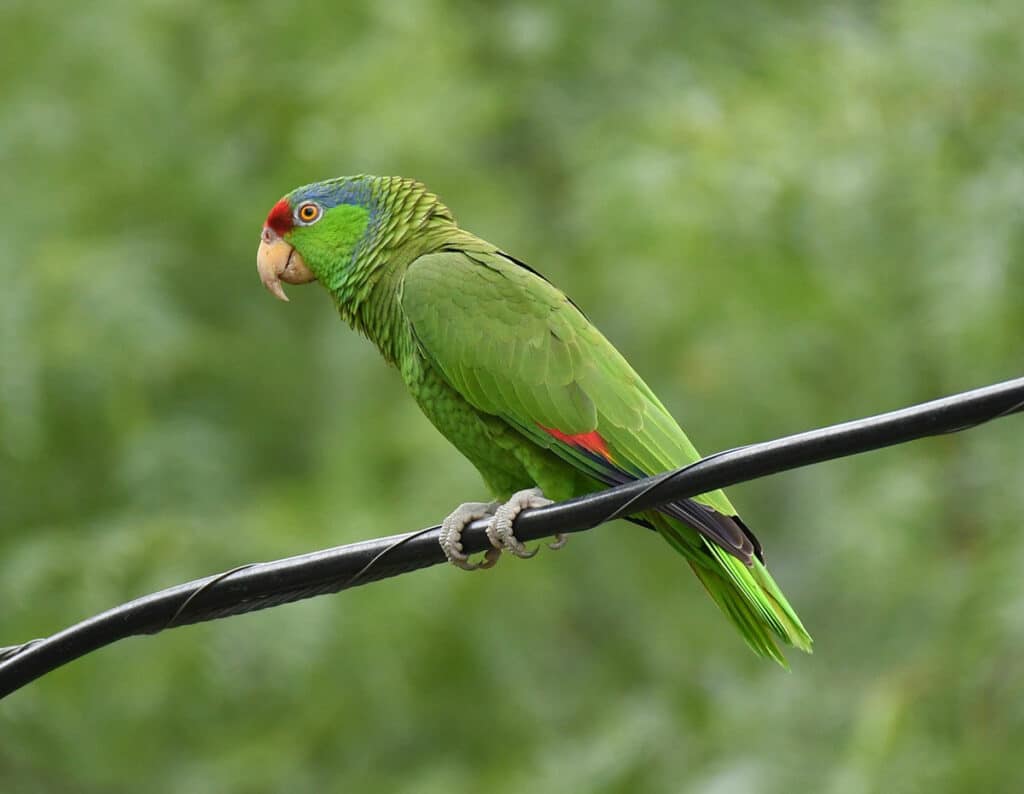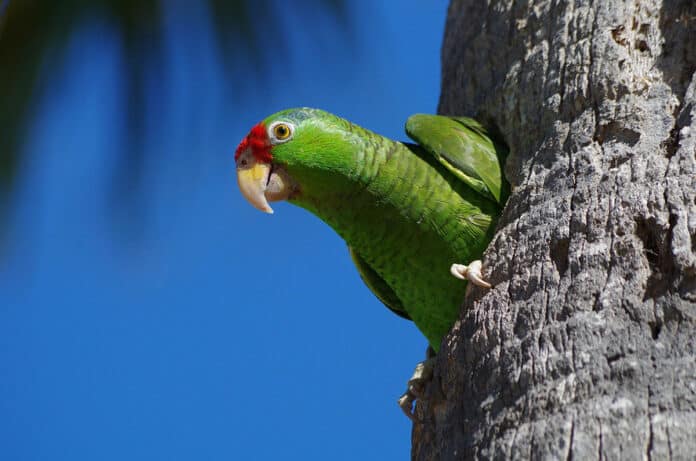Numerous plant and animal species flourish in urban environments and stand to benefit from the current worldwide trend of greater urbanization. The Red-crowned Parrot (Amazona viridigenalis), one of these species, is threatened in its natural habitat but appears to thrive in urban settings. Although populations of threatened synanthropic species may be rare, they can serve as genetic reservoirs and provide us with particular chances for conservation and research.
Scientists from Texas A&M sought to determine the red-crowned parrot’s level of dependency on urban areas and the climatic and anthropogenic drivers of their distribution throughout the US. They found that a population of endangered red-crowned parrots is thriving in urban areas of South Texas.
Given that many animal species are adversely impacted by the growth of human metropolitan areas, which can result in deforestation and degradation of natural habitats, the parrots represent a special instance.
This odd species of primarily green parrot, with a cluster of brilliant red feathers on its head, has adapted well to being removed from its natural habitat due to poaching and the pet trade.
The Texas Parks & Wildlife Department and other conservationists will be able to better safeguard these endangered birds thanks to the team’s record of the red-crowned parrot’s habitat ranges and dependence on urban areas.
Being a native species has advantages, such as Texas Parks & Wildlife’s involvement in studies determining whether parrots thrive in South Texas. This enthusiasm served as the impetus for Brightsmith and Kiacz’s initiative.

Graduate student Simon Kiacz from the School of Veterinary Medicine & Biomedical Sciences (VMBS) Department of Veterinary Pathobiology said, “During data collection, I was looking for population information, trend information, the threats to the populations here in Texas, and habitat usage. We wanted to understand how these birds are doing and what we might be able to do to help them.”
Scientists eventually discovered that the red-crowned parrots appear to be doing quite well in South Texas by counting birds and charting their ecological ranges. They’re particularly common in the Rio Grande Valley, where cities like Brownsville even adopted a red-crowned parrot as their official symbol.
Kiacz said, “There are four main roosts in South Texas. Brownsville, Harlingen, Weslaco, and McAllen all have a group of parrots living in those communities. We used trackers, mapping software, and local knowledge to see where these birds were roosting, and then we just had to count them.”
“We can get a good idea of the population’s breeding activity this way. If there is a decrease in the number of birds at the roost in the breeding season, that’s good because the females are probably nesting somewhere else with their offspring. Then, in the fall, we’ll see all the juveniles join the adults at the roost.”
The species’ success is uncommon because endangered plants and animals rarely survive in urban settings. Synanthropes, or creatures adapted to urban environments, are frequently viewed as neutral or invasive.
Instead, red-crowned parrots get along with people well.
Kiacz said, “Humans have created the perfect environment for these parrots. They want what we want — ornamental plants with well-watered fruit and seeds that look attractive year-round.”
“Even our habit of planting palm trees where they don’t tend to survive is a boon for these birds.”
“All of the palm trees we plant in South Texas are non-native. They eventually die, and then woodpeckers come and make holes that are perfect nesting cavities for these parrots. But they’re also happy to use holes in the sides of buildings.”
The parrots have yet to cause much conflict with other local species for food supplies because they enjoy eating non-native varieties of plants. The noise they make right now is the sole drawback to their existence.
Dr. Donald J. Brightsmith said, “You’ll often see these birds roosting together. They sleep in groups of a hundred or more, and they may choose someone’s front yard, even right over the mailbox. Then, when it gets light outside, they’ll start making noise and flying around. Some people find that to be a nuisance.”
If there’s one thing to learn from the new research on red-crowned parrots, it’s that life finds a way. More and more species will probably relocate into metropolitan areas as urbanization spreads around the globe, possibly with unforeseen outcomes.
The fact that these species are being driven to alter their survival methods isn’t necessarily positive, but there might be opportunities for comparable novel studies.
Brightsmith and Kiacz are currently engaged in new research initiatives that examine the connections between red-crowned parrots and related species, such as the lilac-crowned parrot, and any potential conservation implications of natural hybridization.
This study is expected to raise awareness about red-crowned parrots and improve conservation efforts.
Journal Reference:
- Simon Kiacz, Hsiao-Hsuan Wang et al. The presence of Endangered Red-Crowned Parrots (Amazona viridigenalis) Depends on Urban Landscapes. Diversity. DOI: 10.3390/d15070878
